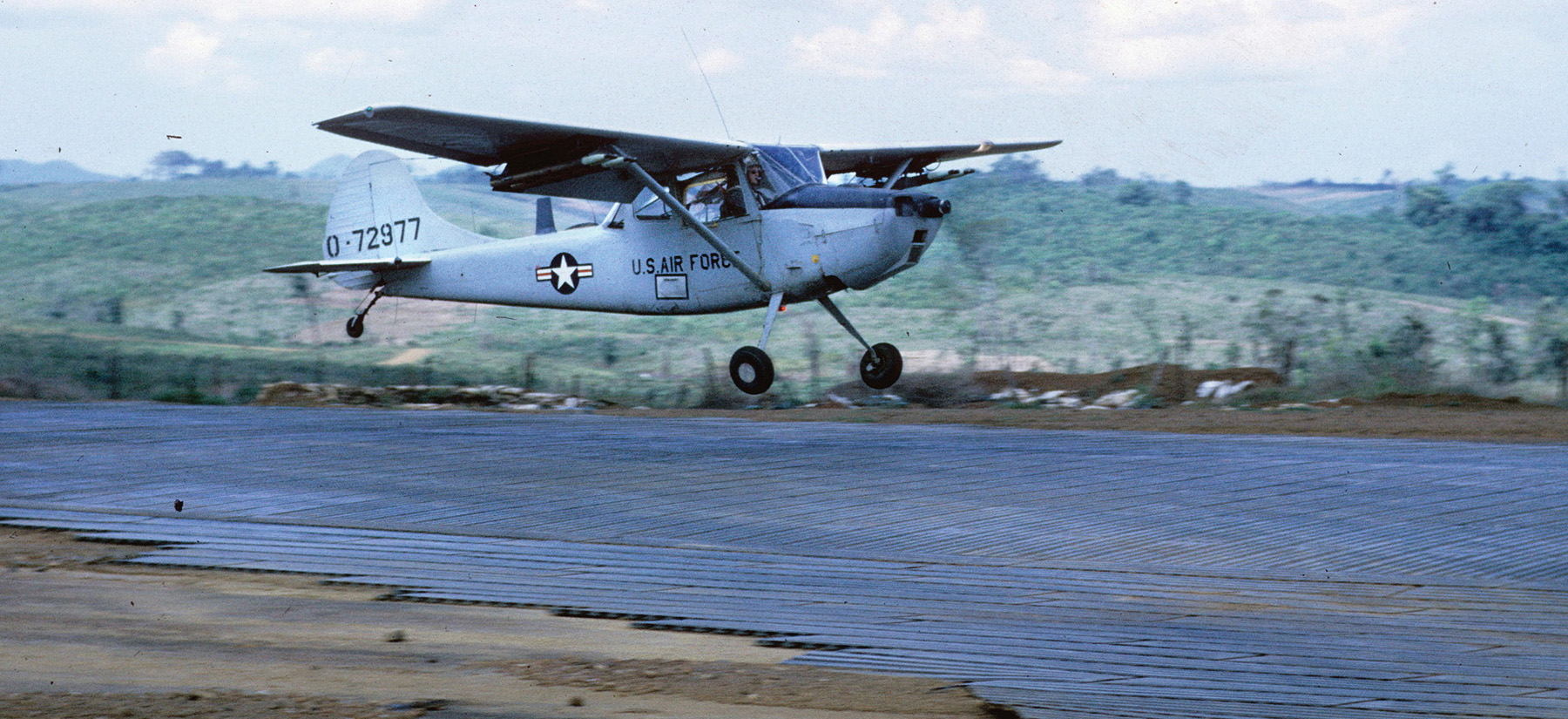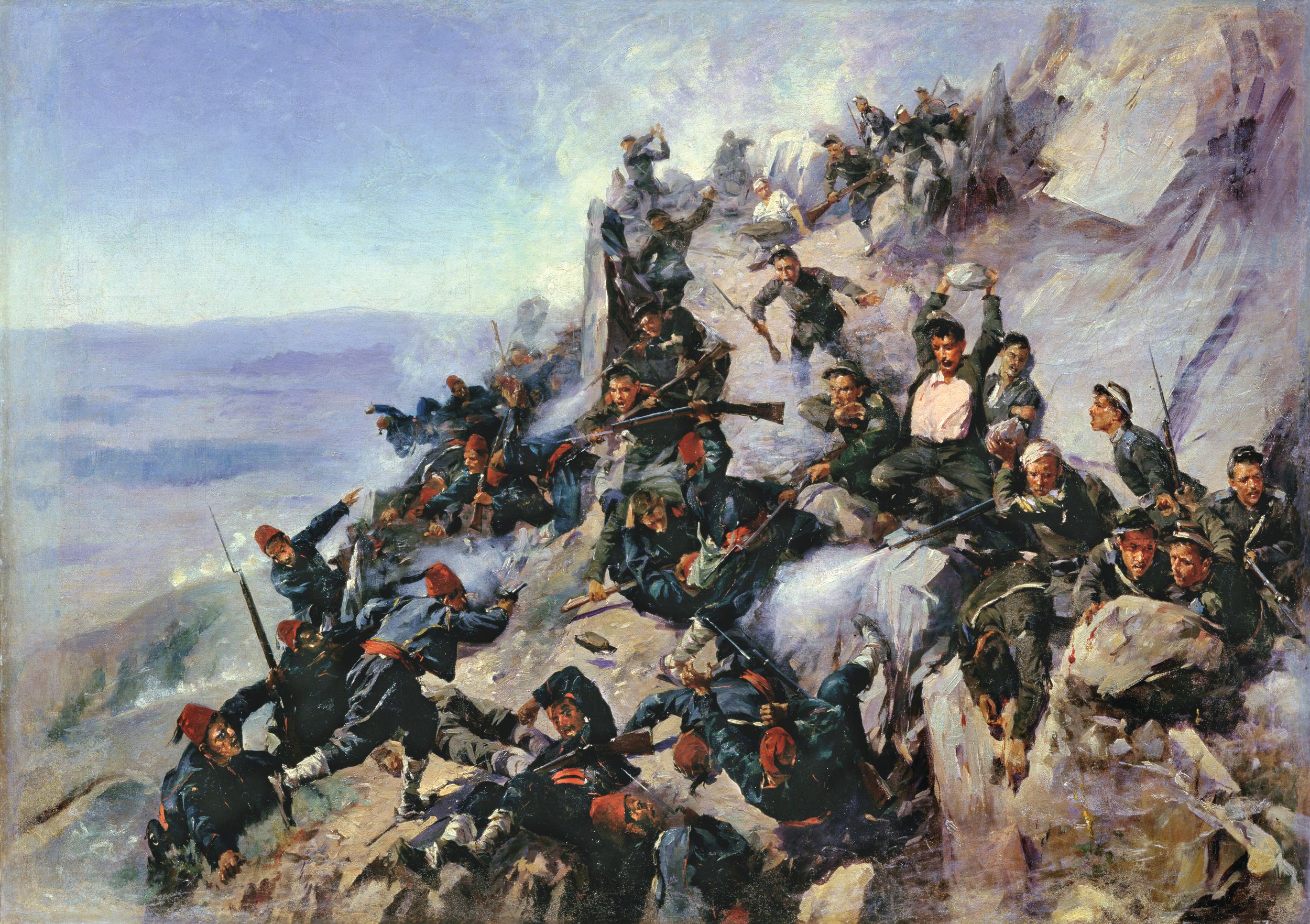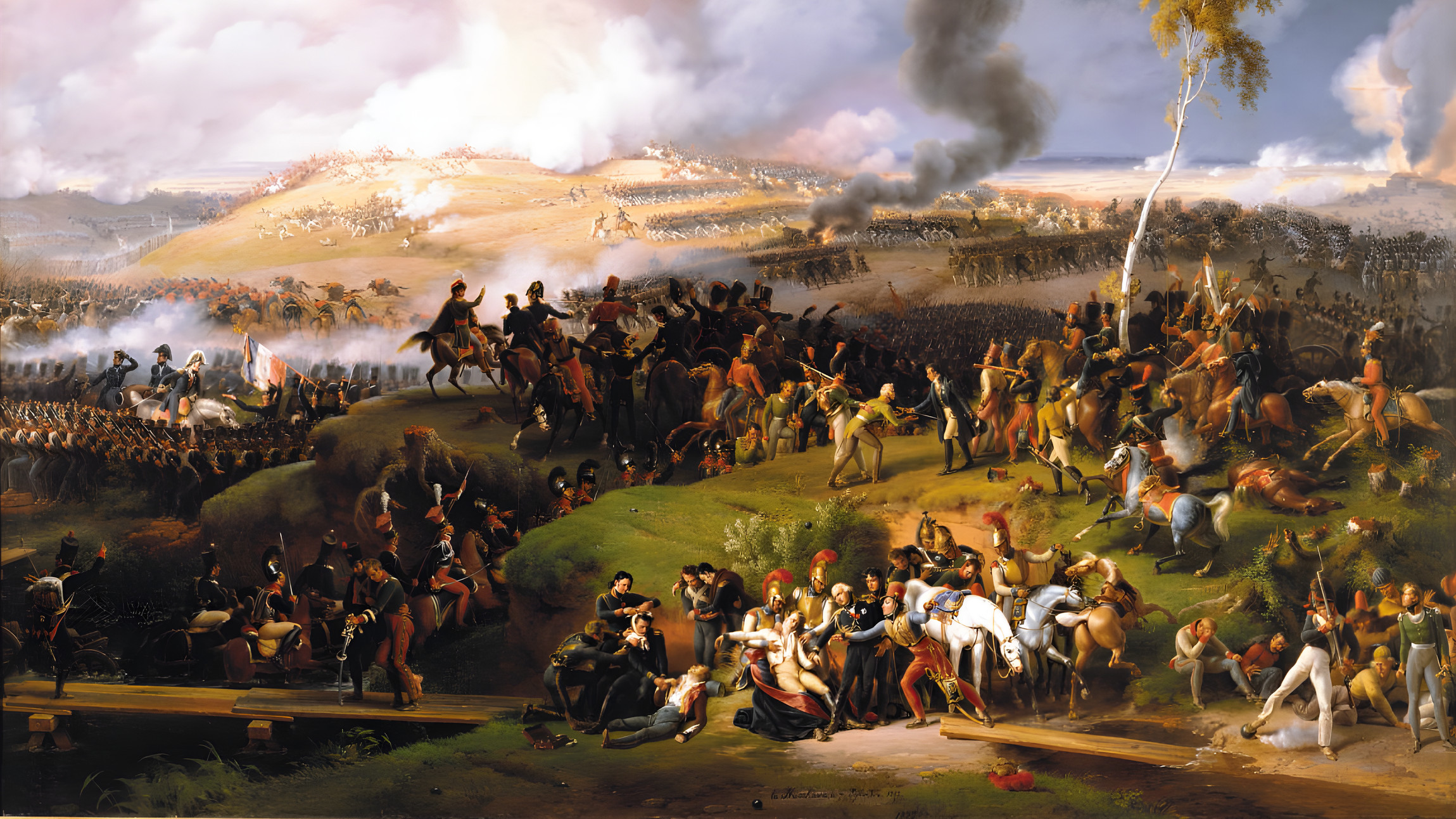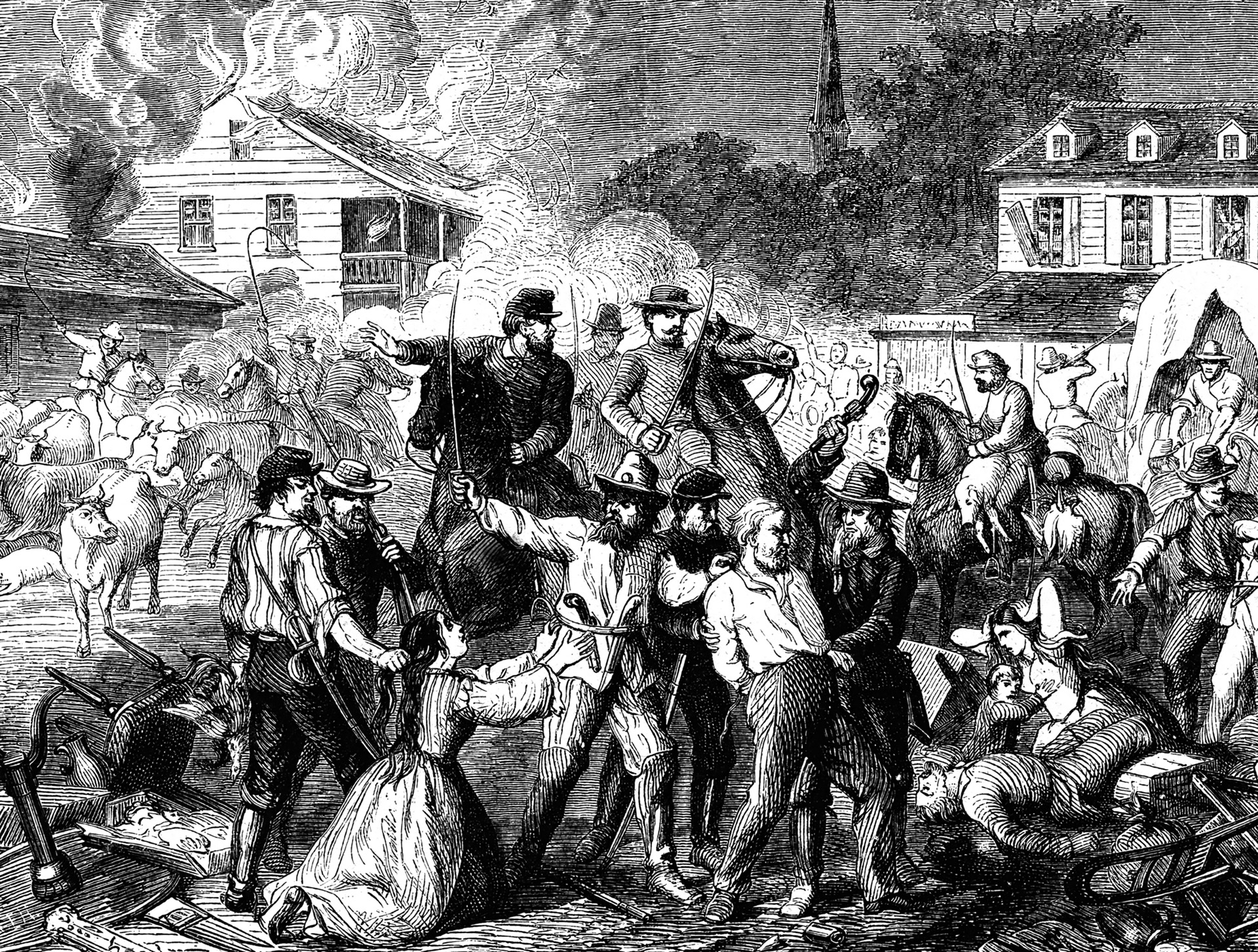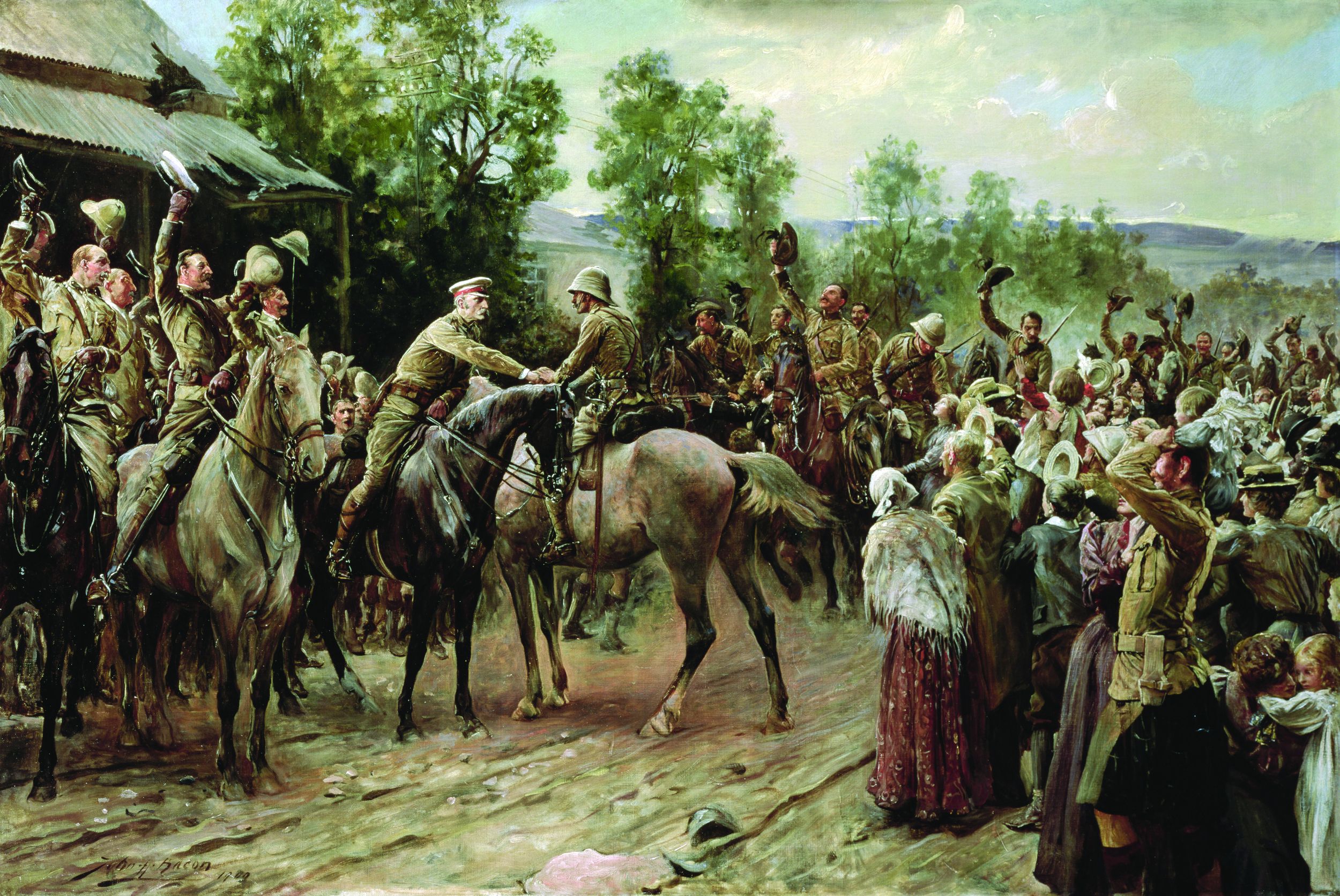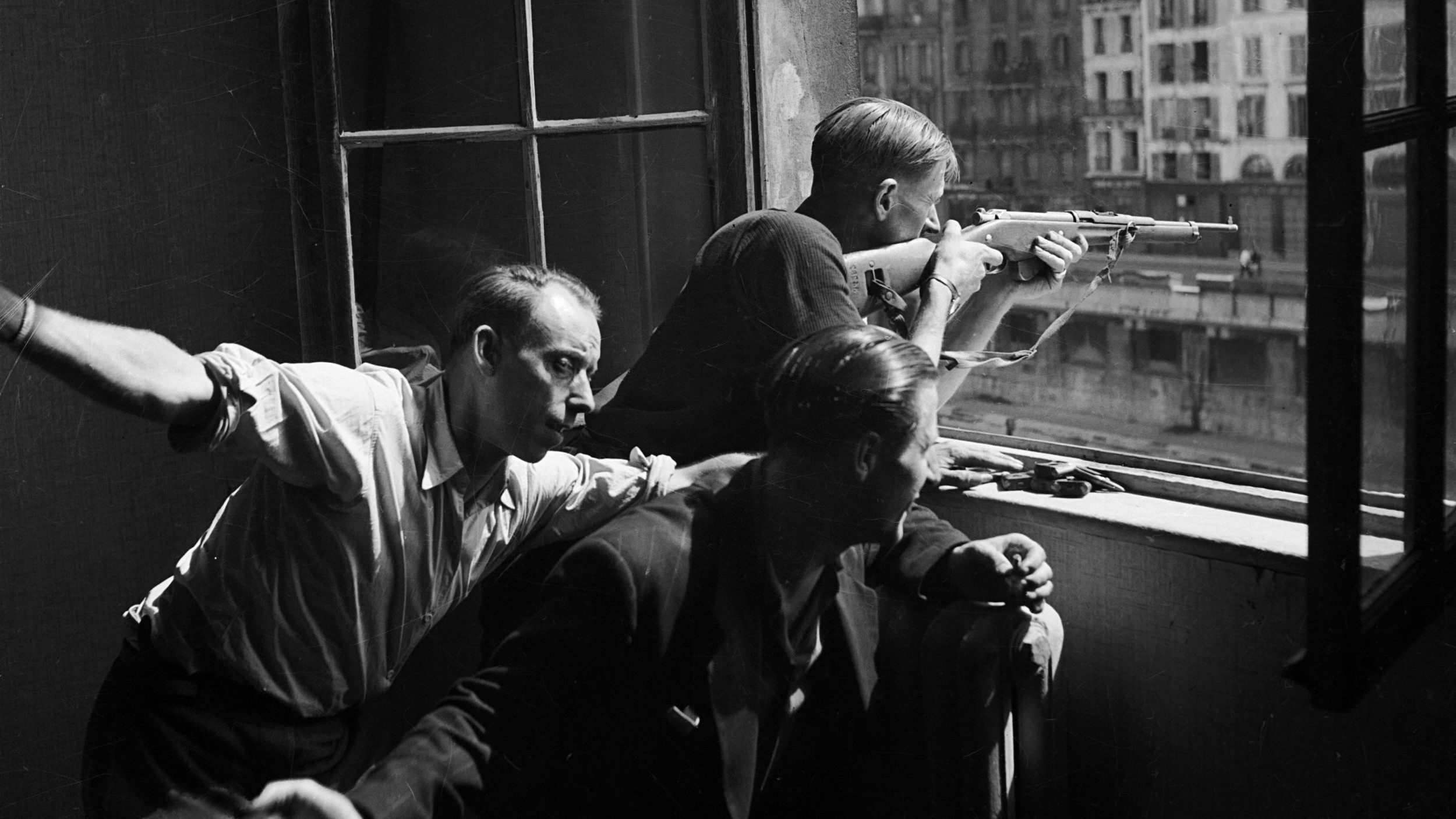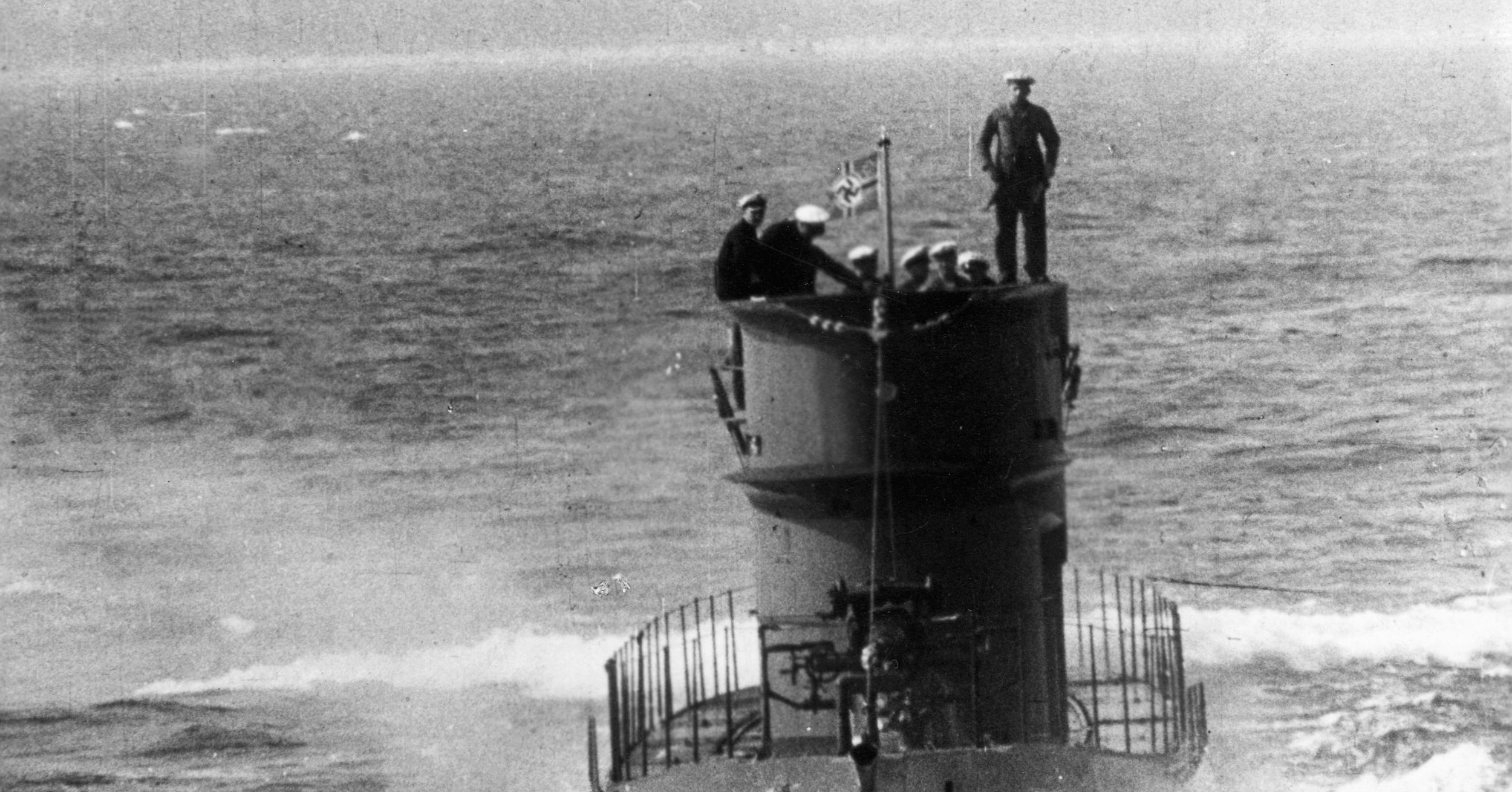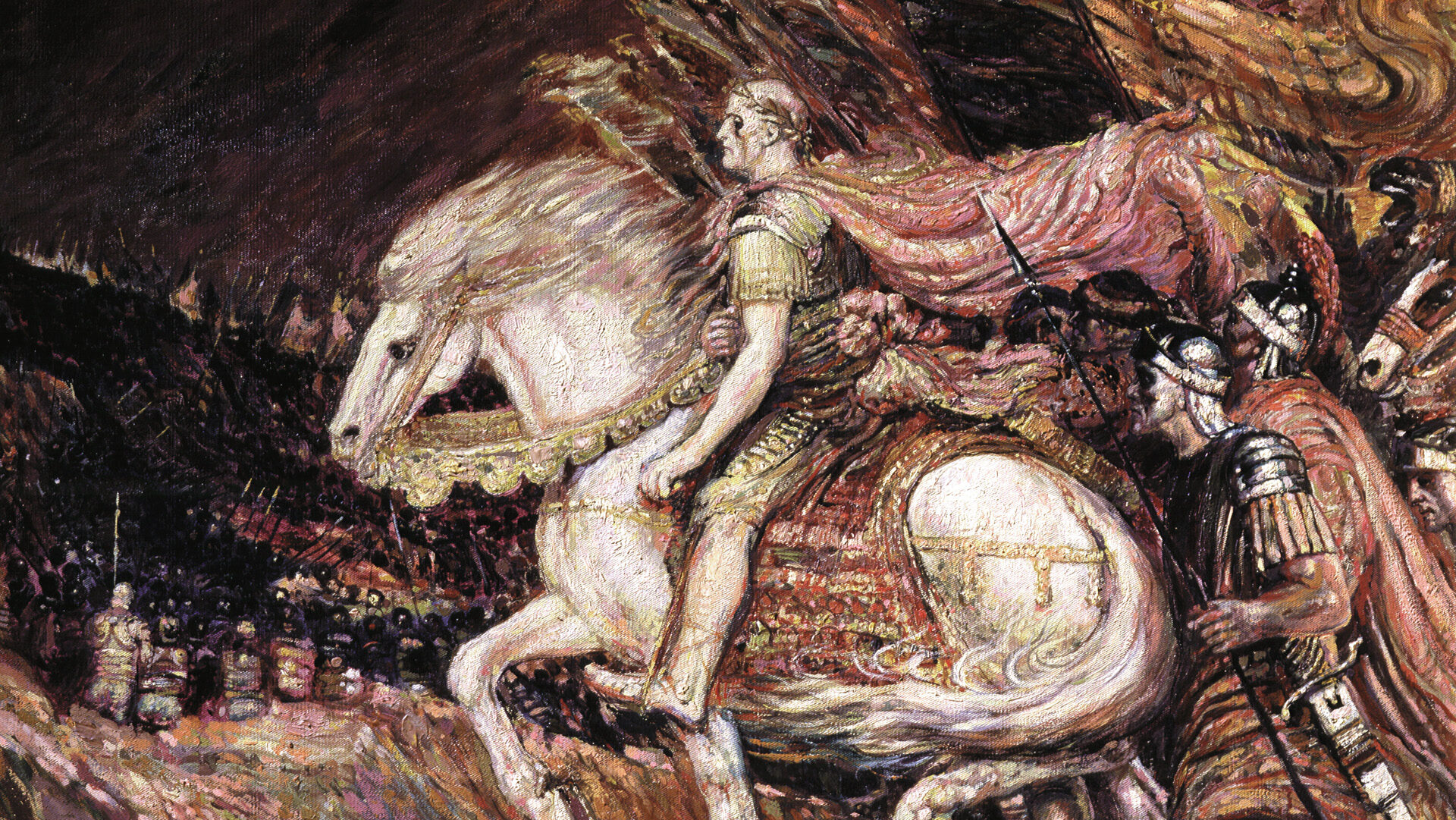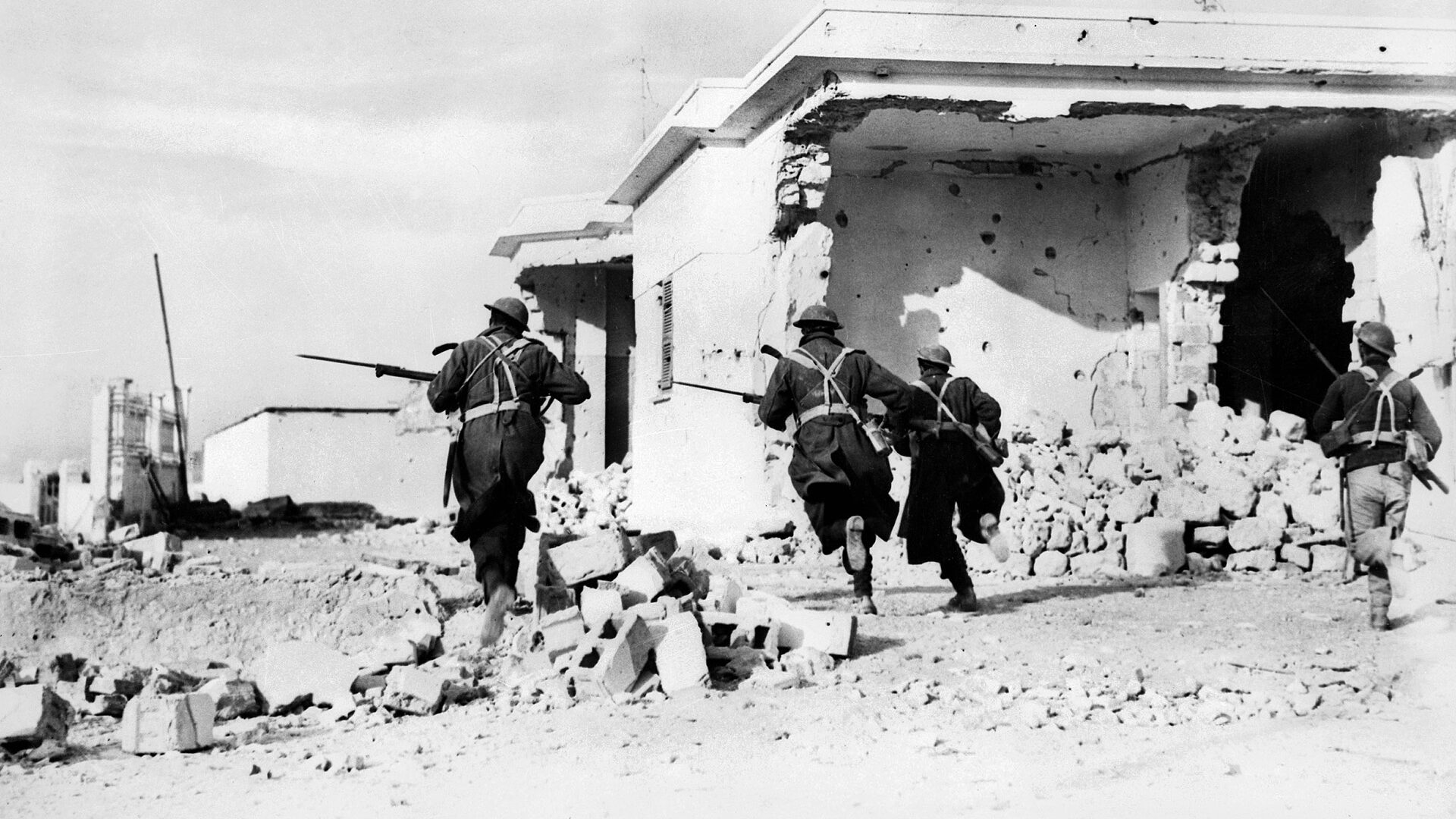By William E. Welsh
Raven forward air controller Charles Edwin Engle usually took his Cessna 0-1 “Bird Dog” up to an altitude of 12,000 feet over northern Laos to await the arrival of a flight of inbound A-1E Skyraiders from Thailand. A gifted pilot, Engle routinely pushed his aircraft beyond its capabilities. Engle liked to meet the Skyraiders at the altitude at which they arrived, which was 2,000 feet beyond the Cessna’s recommended ceiling of 10,000 feet.
The Skyraider pilots normally expected to see a Raven-flown aircraft below them when they arrived, but Engle would surprise the pilots by suddenly appearing out of the clouds. He would then put his aircraft into a stall and plummet toward the ground, pulling out of the spin at 1,500 feet to fire his target-marking rockets. Once the rockets were fired, the Skyraiders could begin their close air support mission for the Laotian troops on the ground fighting the North Vietnamese and Pathet Lao communists.
It took a special breed of forward air controllers to meet the demand of the CIA’s top-secret war in Laos, and Engle’s talents and behaviors were characteristic of the elite Ravens. The Ravens were Air Force officers who joined the secret war in Laos through the Steve Canyon Program established in 1966.
As the French were withdrawing from Southeast Asia in 1954 following their defeat in the First Indochina War, the Geneva Conference—held by a select group of nations involved in the recent Far East conflicts—established a coalition government for Laos. But a divisive civil war erupted in Laos that pitted the democratic Royal Lao government against the North Vietnamese-backed Pathet Lao. President Dwight D. Eisenhower and Secretary of State John Foster Dulles introduced the domino theory, which set forth that the fall to communism of any country on the periphery of the Sino-Soviet bloc would likely result in the toppling of the remaining countries.
When President John F. Kennedy took office in 1961, he directed the CIA to handle covert military operations that would counter the Pathet Lao. By that time, the North Vietnamese Politburo was already sending weapons and supplies to the Pathet Lao. Not long afterward, North Vietnamese Army (NVA) units crossed into Laos to support the Laotian communists and protect and maintain the 600-mile-long Truong Son Strategic Supply Route, which Americans referred to as the Ho Chi Minh Trail. The trail was a network of paths, trails, and dirt roads through Laos and Cambodia that enabled North Vietnam to funnel arms and supplies to the Viet Cong in South Vietnam. The NVA eventually began sending North Vietnamese regulars south along the trail into South Vietnam to fight the Americans. At the height of the war in the late 1960s, the NVA had 60,000 support troops and 40,000 security troops stationed along the trail.
A conference specifically on Laotian neutrality held in 1962 resulted in the International Agreement on the Neutrality of Laos. Among the signatories were China, North Vietnam, South Vietnam, Russia, and the United States. But North Vietnam and the United States only paid lip service to the agreement. Both continued to deny direct involvement in the country as they ramped up support for their respective factions.
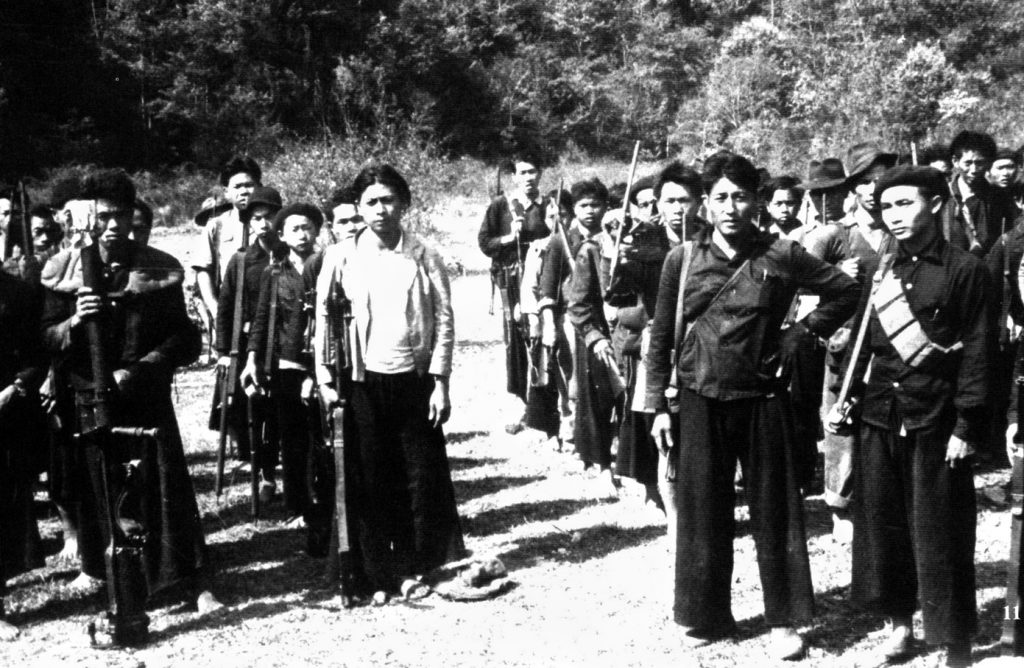
Meanwhile, an interservice fight occurred in the U.S. military over whether the Army or the Air Force should be responsible for directing aircraft to ground targets, regardless of whether it was done from the ground or air. The Air Force won the fight. Yet forward air control was only used during the Korean War to guide air strikes in close proximity to ground troops. In theory, this left pilots free to bomb and strafe outside the so-called bomb line in what were deemed free-fire zones.
The advent of the Vietnam War resulted in rules of engagement mandating forward air control for all close air support missions. In a war where there were no front lines, this was deemed necessary to prevent civilian casualties. All forward air controllers had to follow the rules of engagement. The lengthy set of rules was classified. American military personnel frequently commented that there were so many rules that it was impossible to memorize all of them.
The U.S. military established a hard and fast rule that all tactical strike aircraft, whether rotary or fixed-wing, would be under the control of a forward air controller who cleared requests for strafing and bombing either with an airborne command and control center or a ground-based air support center.
A briefing officer would tell forward air controllers arriving in South Vietnam that if they were interested in adventure, promotions, and medals, they could inquire about participating in the Steve Canyon Program after they had served six months as a forward air controller in South Vietnam. If they were interested, “certain people” could fill them in on the specifics; in other words, those involved with the CIA’s Raven forward air controller program in Laos could give them a wider picture, with more details on the risks and the rewards, of what the mission entailed.
Some forward air controllers serving tours of duty in South Vietnam flew only 15 days a month. While some found this acceptable, others had a burning desire to fly every day. The aggressive forward air controllers found the rules of engagement incredibly burdensome and frustrating. Those with the warrior spirit called themselves the “Shooters.” These aggressive Air Force captains and lieutenants longed for more freedom in the performance of their mission.
The Steve Canyon Program came into existence in 1966 and marked a major improvement in the forward air control supporting both the guerrilla forces battling the communists in Laos. The program took its name from Milton Caniff’s comic strip introduced in 1947, which eventually was syndicated to 200 newspapers. Canyon was a patriotic flyboy who, upon his return from World War II, established a one-plane flight service known as Horizons Unlimited that served as cover for his covert activities. For a time the comic strip character operated a charter air service, but he eventually rejoined the military to fight communism.
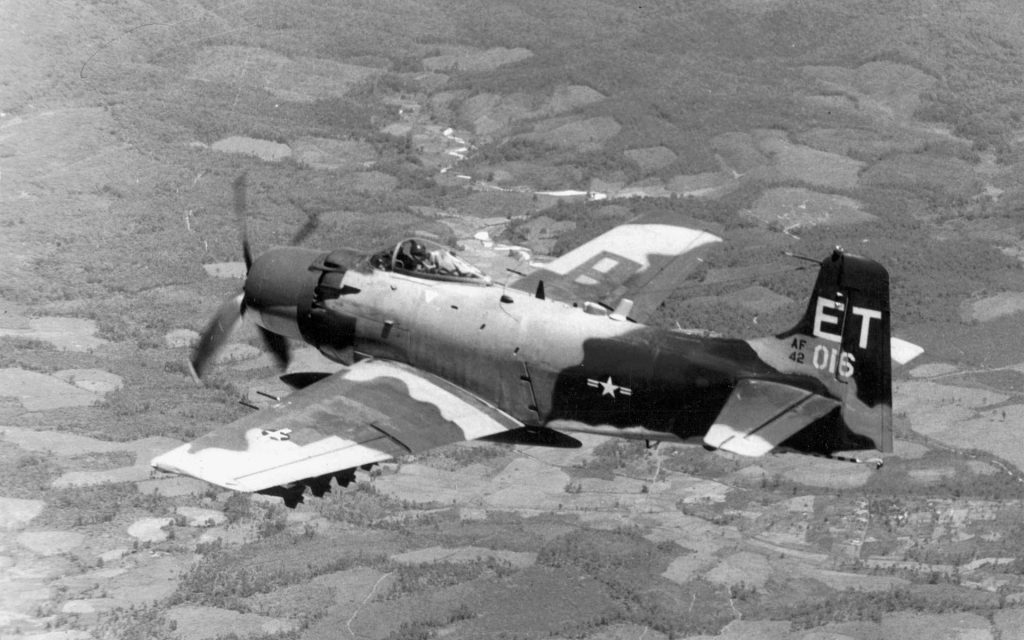
Before the program was created, Air Force noncommissioned officers, known as “Butterflies,” who were not Air Force pilots, conducted forward air control flying in the right seat of an Air America-owned Pilatus PC-6 Porter utility aircraft. When the rated Air Force jet fighter pilots serving in the CIA’s covert war in Laos began conducting forward air control in Cessna O-1 aircraft in 1966, they replaced the anachronistic Butterflies.
Both the Butterfly NCOs and the Air Force officers who volunteered for the Steve Canyon Program operated under the call sign Raven; hence, they became known collectively as the Ravens. All of the forward air controllers in Laos belonged to Project 404, which was the code name for secret Air Force operations in Laos and Thailand.
Upon arriving in the Laotian capital of Vientiane aboard a CIA Air America plane, the new Ravens traded in their military uniforms for civilian clothing. The forward air controllers were “sheep-dipped.” The saying refers to the process of giving the fighter pilots false civilian identities to cover their role as intelligence agents.
Although more than 200 Air Force officers volunteered for the Steve Canyon Program between 1966 and 1973, the number operating in Laos at any given time was very small. Only four Butterflies furnished forward air control before 1966, and in the first few years of the Steve Canyon Program only a half dozen were providing forward air control at any one time.
This increased to 25 Ravens during the peak years between 1969 and 1973. The Ravens technically were under the command of the U.S. Air Force’s 56th Special Operations Wing at Nakhon Phanom Royal Thai Air Force Base. Detachment One of the 56th Special Operations Wing administered their records and pay and was based at Udorn Royal Thai Air Force Base in northern Thailand. The Seventh/Thirteenth Air Force, a hybrid Air Force combat unit headquartered at Udorn, also played an administrative and combat support role for the Ravens. The CIA deputy chief of operations at Udorn coordinated the air war over Laos with two Air Force officers.
The Air Force gave all forward air controllers arriving in South Vietnam 80 hours of flight training in F-4 Phantoms (superseded by T-33 Shooting Stars, which were less expensive to use as trainers) , which included instruction in weapons delivery. This first-hand experience in bombing with different munitions was crucial for future forward air controllers because it gave them a sense of what was involved in delivering ordnance to ground targets.
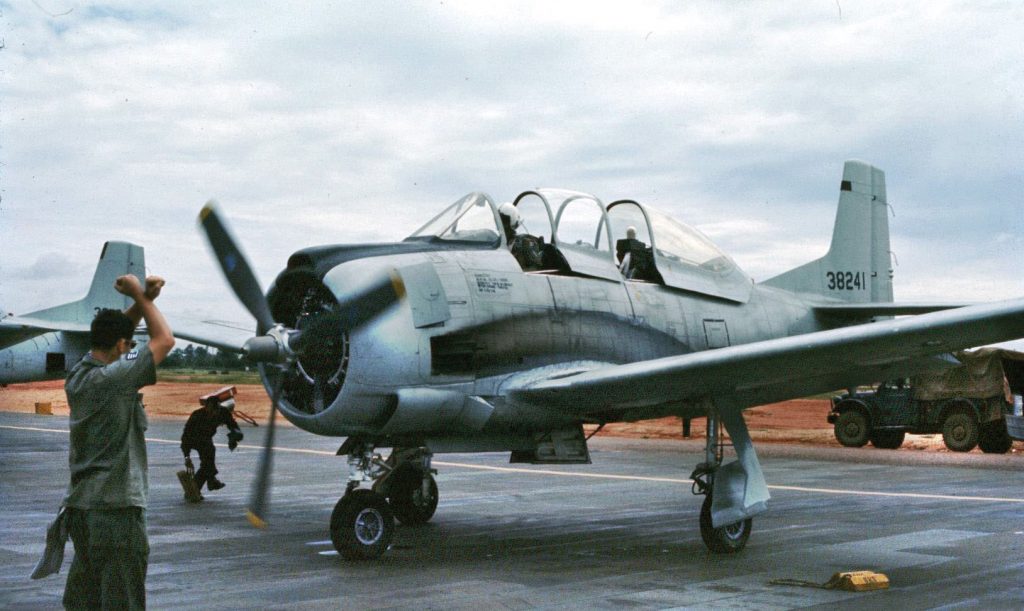
A forward air controller’s job was to coordinate air support for ground troops, participate in air rescue operations, submit requests for strike aircraft, mark targets for strike aircraft with rockets, and make bomb damage assessments. The ubiquitous Cessna O-1 served as the principal aircraft for forward air controllers in South Vietnam and for the secret war in Laos; however, the forward air controllers in South Vietnam eventually received the state-of-the-art, fully armed North American Rockwell OV-10 Bronco.
The Cessna O-1, which was introduced in 1950 for use by the Army, Air Force, and Marines, was a two-seater, high-wing monoplane. It had a host of weaknesses, though, which made it imperative that aerospace contractors develop and produce better observation aircraft in the 1960s. First, it lacked self-sealing fuel tanks. Second, it carried too few rockets for target marking. Third, its range was slightly over 500 miles and its maximum speed was only 115 miles per hour.
As the secret air war in Laos progressed, the Air Force required the Ravens to return their reconnaissance aircraft to Udorn every 100 hours, which was roughly every 10 days, for routine maintenance. While on duty, the intrepid Ravens patched the bullet holes in their aircraft with a strong fabric adhesive material known as typhoon tape.
The CIA’s strategy in Laos for fighting the communists involved training and arming Hmong tribesmen who would have substantial U.S. air support. This was done through a clandestine program known as Forward Momentum. The Hmong were a Sino-Tibetan people who migrated south from China into Laos in the mid-19th century. Unfortunately for the Hmong, they were looked down upon by the lowland Lao who considered themselves superior to the Hmong.
The Hmong guerrillas lacked artillery, and the U.S. Air Force and CIA airpower sought to make up for this by serving as mobile artillery for the guerrillas in their attacks on the communists. The budget for Operation Forward Momentum began at $5 million for the first year in 1961 and skyrocketed to $500 million annually by the close of the decade. The Hmong commander, Van Po, commanded upward of 30,000 guerrilla fighters who were intimately familiar with the terrain of northern Laos. The Hmong tribesmen were armed only with World War II-era U.S. weapons because the U.S. Army wanted to save its modern weapons for the American troops fighting in South Vietnam.
Beginning in 1961 the CIA began establishing air strips throughout Vietnam. These were numbered and designated as either paved (Lima) or unpaved (Lima Site). For example, General Vang Po’s expansive Hmong guerrilla base at Long Tieng was designated Lima Site 20A, and Vientiane was Lima 08.
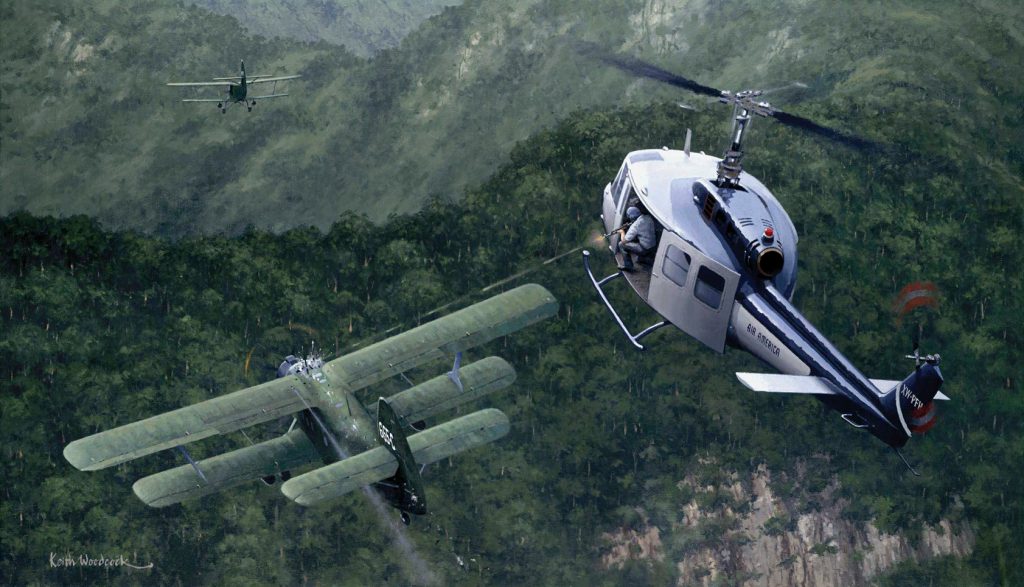
The CIA divided Laos into five military regions. The plum posting for a Raven was to MR II, which consisted of the Plain of Jars and the territory to the northeast of it where the Pathet Lao and some of the NVA forces were concentrated. MRI and MR5, which encompassed northwestern Laos and the area around Vientiane, respectively, had less activity. MR III and IV covered the Laotian panhandle and the Ho Chi Minh Trail. Specifically, MR III covered the part of the trail adjoining North Vietnam, and MR IV covered the part of the trail in Laos adjacent to South Vietnam.
The CIA had positioned a sophisticated tactical air navigation system atop the 5,600-foot Phou Pha Thi Mountain in MR 1 north of the Plain of Jars to direct U.S. fighter-bombers flying from Udorn in Thailand to targets in North Vietnam. The site was established on the high mountain in 1966, and it was upgraded the following year to enable U.S. aircraft to bomb at night and in all weather conditions. A top-secret Air Force helicopter delivered 150 tons of equipment from Udorn.
Several North Vietnamese Soviet-made Antonov An-2 biplanes attacked the installation on January 12, 1968, and CIA forces took to the air in helicopters to engage them. The North Vietnamese aircraft strafed the site with machine guns and dropped mortar shells by hand. A CIA-owned Air America helicopter engaged the biplanes as they made passes over the site. Firing an automatic weapon, a CIA member of the Air America crew brought down one the biplanes. The helicopter then chased away the others.
The North Vietnamese returned two months later with ground troops to capture the site. Three battalions of the NVA 766th Regiment arrived with artillery and began their assault. The site was defended by Thai mercenaries and Hmong tribesmen that belonged to the CIA’s proxy army battling the Pathet Lao. The combatants grappled on the steep, rocky slopes of the mountain. The NVA pressed their frontal attack in the belief that they could easily overwhelm the defenders. Enemy commandos scaled the mountain and overwhelmed the small number of defenders. The Air Force, CIA, and Hmong survivors lowered themselves down the mountain by rope and hid in grottoes until they could reach the valley floor.
The Ravens assembled the following morning at Lima Site 20 miles to the southeast and began directing Laotian T-28 aircraft and U.S. fighter-bombers against the NVA on the mountain. The Ravens flew for at least 12 hours that day, directing air strikes and helicopter rescues. Air America helicopters rescued the personnel who operated the tactical air installation, as well as the guerrilla forces whose job it was to help defend the installation. Of the 16 Air Force personnel on the mountain, only four were rescued. The CIA never disclosed how many of its personnel were lost in the battle. Laotian and American aircraft bombed the installation for an entire week trying to destroy the equipment so it could not be used by the enemy. The Air Force and CIA subsequently established a new air navigation system on another mountain.
By the end of 1969 the North Vietnamese were building roads in MR II. At the beginning of 1969, the NVA committed the entire 11,000-strong 316th Division to the region. These troops were supported by 175mm howitzers and 122mm rockets.
The pilots in the Royal Lao Air Force flew T-28 fighter-bombers provided by the United States. It was the principal attack aircraft for the Laotians during the secret war. In addition to Laotian pilots, Thai pilots volunteered to fly the T-28 in combat in Laos. Although the Ravens were forbidden to fly the bombers, on occasion they broke the rule if a Laotian pilot refused to bomb a particular target. The North American T-28 was designed both as a trainer and as an armed counterintelligence aircraft. The two-seat aircraft was armed with two .50-caliber machine guns and could carry 1,800 pounds of bombs and rockets.
The T-28s were highly vulnerable to the powerful antiaircraft guns the enemy had deployed to protect the Ho Chi Minh Trail in the Laotian panhandle. Laotian pilots flying T-28s participated in strike operations Steel Tiger and Tiger Hound, which bombed targets on the Ho Chi Minh Trail in the eastern half of the panhandle.
But Laotian airpower alone was not enough to get the job done in Laos. The Ravens could call up propeller and jet fighter-bombers piloted by clandestine U.S. Air Commando pilots based at Nakhon Phanom in Thailand. Early in the secret war Ambassador to Laos William H. Sullivan had successfully persuaded U.S. Defense Secretary Robert McNamara to furnish A-1 Skyraiders, Douglas A-26 Invaders, and North American T-28 Nomads.
The propeller-driven Douglas A-1 Skyraider, which was armed with four 20mm cannons and could carry 8,000 pounds of external ordnance, was particularly suited for ground-support missions in Vietnam and Laos. These propeller-driven fighter-bombers were better for close-air support than jet fighter-bombers because they could linger over targets longer than the jets.
At the end of the Laotian civil war in 1975, it was estimated that 200,000 Laotians had died in the conflict. Additionally, 750,000 had been wounded by the heavy bombing in northern and eastern Laos.
Air Force Captain Engle was declared missing in action from his last mission on February 22, 1971. He was the recipient of the Air Force Cross for a courageous rescue he performed in June 1970. He and his fellow Ravens did their utmost to support the Laotians throughout the long conflict.
